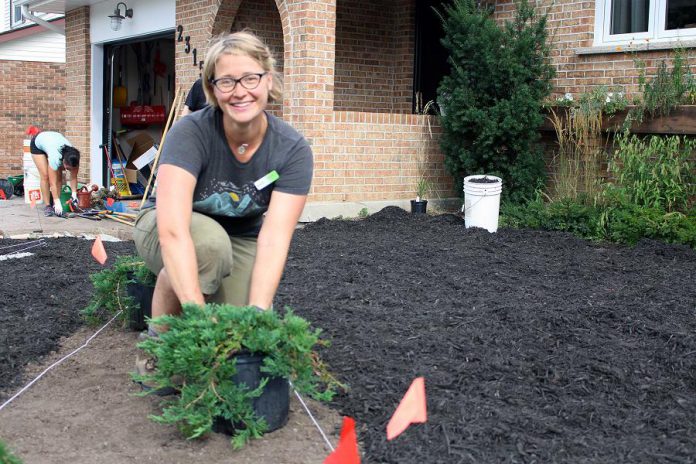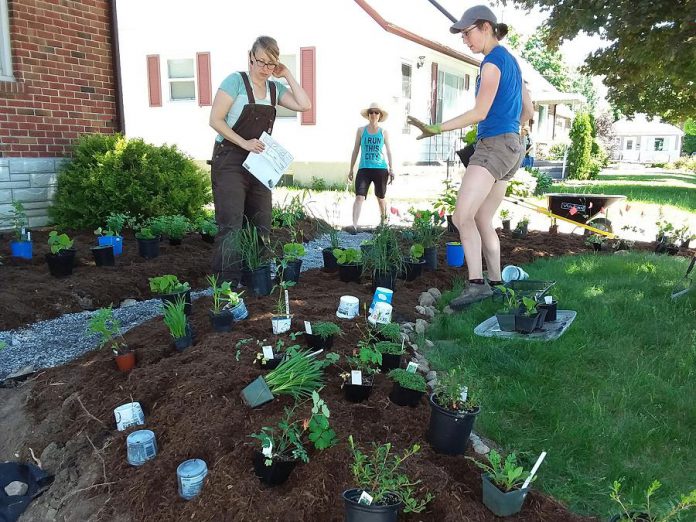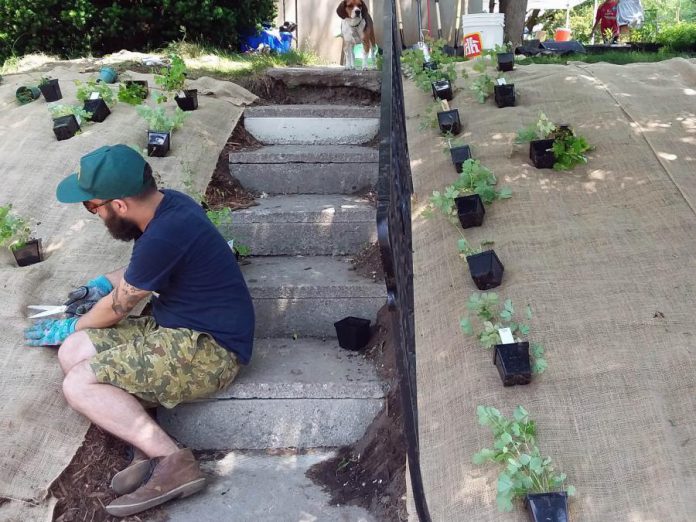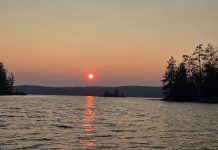
The season for mowing lawns is still ahead of us, but now is a great time to start thinking about how we use and maintain our yards.
Specifically, let’s talk about something that we all know, and may or may not love: grass.
Whether you love mowing the lawn or would prefer to not have grass at all, there are certain practices that homeowners can do to reduce water use and mower emissions. There are also alternatives to grass that can add curb appeal and habitat for pollinators.
Conventional lawn grasses are typically a mix of three main species: Kentucky bluegrass, perennial ryegrass, and creeping red fescue. These grasses are native to Europe and Northern Asia, and were introduced to North America as pasture for livestock. During this time of settlement, cattle, goats, and sheep would nibble these grasses and fertilize them with their manure, maintaining a lush low pasture.

For the modern homeowner, maintaining the lushness of a lawn can be laborious, with all the mowing, watering, and fertilizing. These practices can have negative impacts on the environment.
According to the U.S. Environmental Protection Agency, a single new gas-powered lawn mower in use for one hour produces the same amount of emissions as 11 new cars being driven for an hour. Additionally, fertilizers can run off of lawns and into waterways when it rains, causing problems for fish and other species.
“During the summer months water use can increase by 50 per cent, mostly due to outdoor water use,” says GreenUP water programs manager Heather Ray.
“Common lawns have short root systems, which means they are not tolerant to periods of drought and therefore require a lot of water to maintain their health. There are ways to promote a water-wise lawn by increasing aeration, de-thatching so water can get to the roots, and mixing in more drought-tolerant species. Keep in mind that lawns bounce back so, in severe drought situations, you can skip the watering and leave your lawn to turn brown.”
If you would like to maintain a lawn in a more environmentally responsible way, consider trying some of these strategies:
- Use a hand mower. Since the only energy inputs for a hand mower are from moving your body, there aren’t any harmful emissions involved. Other options for reducing emissions include using battery powered or electric mowers.
- Mow high. Mowing your grass no shorter than six to eight centimetres (2.5 to 3 inches) will ensure that its root system stays healthy and strong.
- Leave grass clippings on the lawn. Clippings will decompose and provide nutrients to your lawn.
- Keep your mowing blade sharp. A sharp blade cuts grass more cleanly, and helps keep the grass healthier. Check the blade of your mower approximately every 8-10 hours of use.
- Add compost. You can add up to a 1.3 centimetres (1/2 inch) of finely screened compost (either homemade or purchased) to your lawn in the early spring and early fall. As a natural fertilizer, it will provide nutrients to your grass, will help retain moisture, and won’t run off as easily as artificial fertilizers.
- Water responsibly. In the heat of the summer, your lawn may go dormant. This is normal, and it will return to its lush green colour with rain in the fall. When your lawn is dormant, watering will do more harm than good.
Alternatively, if you aren’t that keen on conventional grass to begin with, there are other options you can pursue. For example, buffalo grass is native to the central North American prairies, and can tolerate hot and dry weather better than conventional lawn species can.

White Dutch clover, white yarrow, and creeping thyme are three great ground covers that can be used as lawn alternatives. These species are low growing, can be mowed if desired (or not — they don’t grow that tall), and produce flowers that provide food to pollinators. These plants can even be added to existing lawns if you wish to diversify your lawn.
Consider starting small. Try replacing your grass by adding one square foot of clover at a time. This will provide more food for pollinators and wildlife habitat.
If you are interested in creating an even more diverse landscape on your property, there are many native plants that provide colour and interest, and once established, they can tolerate our summer’s typical drought conditions.
“Dogwood, New Jersey tea, coneflower, bee balm, milkweed, aster, and black-eyed Susan provide pollen and nectar for native pollinators throughout the growing season,” explains Carlotta James from Three Sisters Natural Landscapes. “Converting your lawn into healthy pollinator habitat is an important step to help reverse the decline of pollinator populations around the world.”
For more ideas about native plants that can be used to add appeal and habitat to your property, check out GreenUP Ecology Park’s Plant Sale on Saturday, May 18th, or throughout the season from May to October.
To see what Peterborough residents are doing to reduce water use around their homes, visit greenup.on.ca/waterwise to view photos and garden profiles for more than 20 gardens nominated through the GreenUP Water Wise program, as funded by Peterborough Utilities Group.
GreenUP Water Wise program also has a Water Wise garden starter kit, including a garden design, which is available at GreenUP Ecology Park. Quantities are limited, so get yours early in the gardening season.
If you would like to buy some vegetable seeds for your garden, or a rain barrel for conserving water on your property, stop by the GreenUP Store at 378 Aylmer Street North in downtown Peterborough. The GreenUP Store also carries composters, which you can use to divert some of your household waste and create your own compost.


























